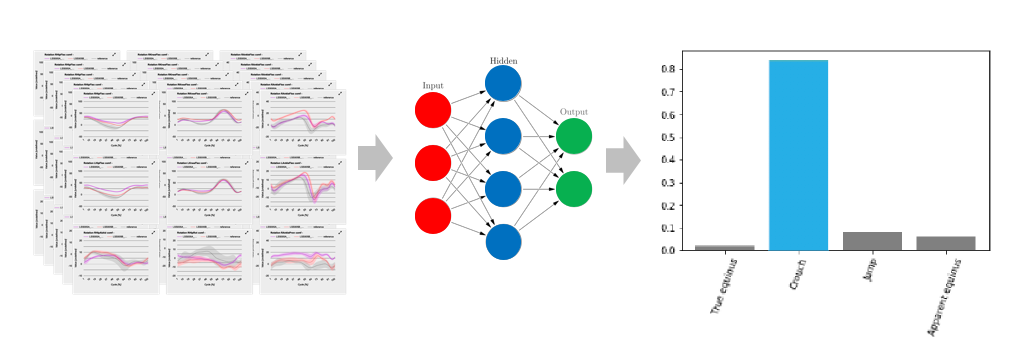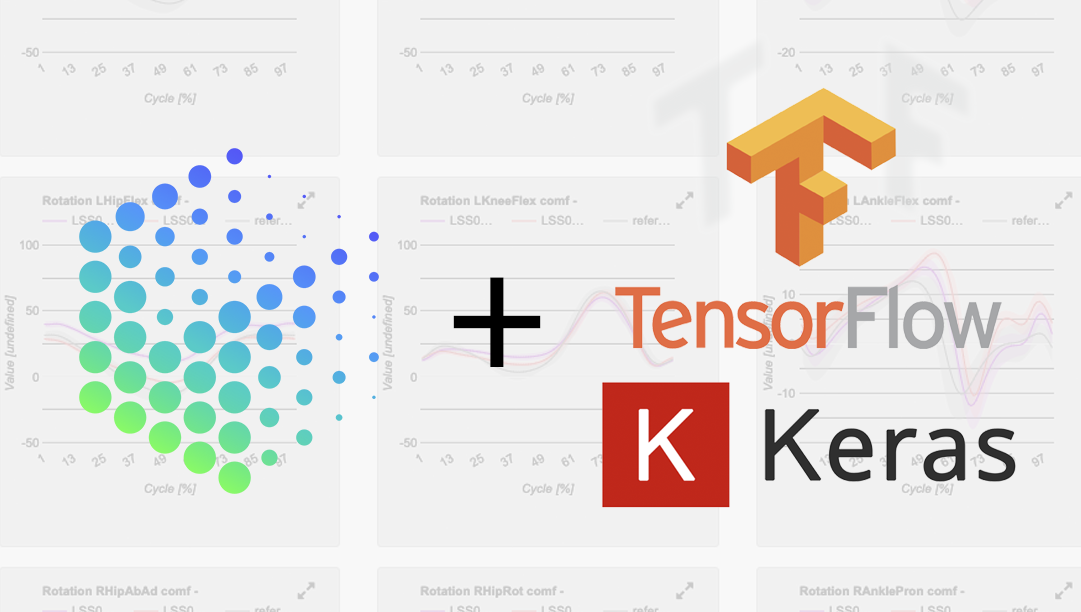We are working to make sure that interactive, multi-media reports with 3D movement analysis can be built intuitively directly in our web application.
TL;DR Train and test your gait pattern classifier with this Jupyter notebook
At Moveshelf, we are working to make sure that interactive, multi-media reports with 3D movement analysis can be built intuitively, with just few clicks, directly in our web application. However, we do understand that in many cases, movement science it’s about research, data science and about developing custom models.
For this reason, right from the start, we decided that our (amazing 🙂) user interface would be only one of the ways to access our core architecture and backend services. In fact, our backend services are accessible through our API (api.moveshelf.com) and are designed for scalable data conversion, processing, classification and secure storage with full access control. We have released open source code to show how to get started, using most popular programming languages (like Python).
…our backend services are accessible through our API and are designed for scalable data conversion, processing, classification and secure storage with full access control…
Data Science and Machine Learning tools have reached pretty amazing levels of accessibilities and ease-of-use with libraries like TensorFlow and Keras and with ready to use development environments like Jupyter Notebooks and Google Colab, fantastic for quickly running powerful experiments.
So, while upgrading the Moveshelf API and our Python example code, I have been experimenting a bit more with Jupyter notebooks and ended up with few notebooks that I would like to share with you.
Next to those that show how the API works in detail (they will be released separately since they are REALLY important 😉), let me start with a nice one.
Basic idea:
- Leverage the Moveshelf infrastructure through its API using Python;
- Access a large number of 3D gait analysis trials programmatically (i.e. will use Joint Kinematics from 35+ trials from this dataset of Digiplegic gait patterns)
- Run the (Python) code on a browser, using a Jupyter notebook to reduce IDE setup time to … well ... ZERO;
- Train and test a Machine Learning gait pattern classifier with TF.Keras running on a GPU to accelerate the neural network training;

Some remarks about Google Colaboratory
Although the Google's Jupyter notebook environment is pretty much comparable to other ways of running your Jupyter Notebooks in the cloud (like with Binder or Azure Notebooks) here you are few reasons that makes it a nice choice for our purpose:
- Very smooth learning curve. No setup, no bumps, core Python packages all available out of the box;
- Simple to install missing dependencies, copy Github repos and fetch dataset programmatically (without any data transfer to the client!);
- Really easy to share to be executed, copied and modified;
- Free GPU and TPU options are insane (probably need to push this a bit and hit some limit);
One more thing...
Of course, the trained classifier can be easily deployed and used to make inference predicitons on any other private or public 3D gait data.

Still reading? ...grab your API key and get started with training and testing you gait pattern classifier here
How about you? Are you comparing and training models on movement analysis and biomechanics data? Would you like to deploy them secure and scalable?
In any case, please get in touch and share you thoughts.


